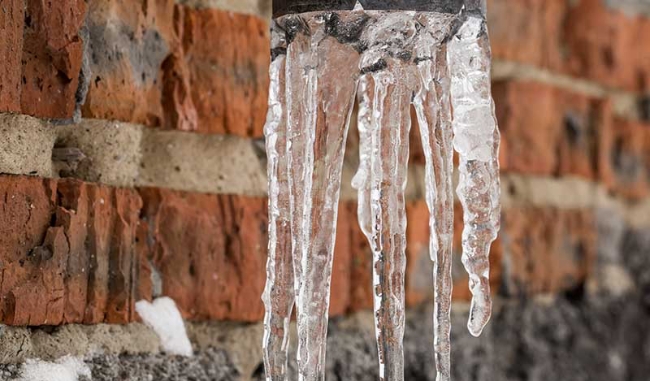The publisher is making a number of great points related to How to Prevent Your Pipes From Freezing in general in the article further down.

Cold weather can ruin your pipes, particularly by freezing pipes. Here's how to stop it from taking place and what to do if it does.
Introduction
As temperature levels decrease, the risk of frozen pipelines boosts, potentially causing pricey fixings and water damages. Comprehending just how to avoid frozen pipelines is essential for homeowners in cold climates.
Avoidance Tips
Shielding susceptible pipelines
Wrap pipes in insulation sleeves or use warm tape to protect them from freezing temperature levels. Focus on pipelines in unheated or external locations of the home.
Heating techniques
Maintain indoor spaces sufficiently heated up, specifically locations with plumbing. Open cabinet doors to enable cozy air to circulate around pipes under sinks.
Just how to recognize icy pipelines
Look for decreased water circulation from taps, unusual odors or sounds from pipelines, and noticeable frost on exposed pipes.
Long-Term Solutions
Architectural modifications
Think about rerouting pipelines away from exterior wall surfaces or unheated areas. Include extra insulation to attic rooms, cellars, and crawl spaces.
Upgrading insulation
Invest in premium insulation for pipes, attics, and walls. Proper insulation assists preserve regular temperatures and minimizes the threat of frozen pipelines.
Shielding Outdoor Pipes
Garden hose pipes and outside taps
Disconnect and drain yard hoses prior to winter season. Set up frost-proof spigots or cover exterior faucets with shielded caps.
Understanding Icy Pipelines
What causes pipes to freeze?
Pipes freeze when revealed to temperature levels listed below 32 ° F (0 ° C) for expanded durations. As water inside the pipes ices up, it broadens, putting pressure on the pipe walls and possibly triggering them to break.
Threats and problems
Icy pipelines can cause water interruptions, residential or commercial property damages, and expensive fixings. Burst pipes can flood homes and create considerable structural damage.
Indications of Frozen Water Lines
Identifying frozen pipes early can avoid them from bursting.
What to Do If Your Pipelines Freeze
Immediate actions to take
If you think frozen pipes, maintain faucets open up to ease stress as the ice melts. Make use of a hairdryer or towels taken in warm water to thaw pipes slowly.
Final thought
Stopping frozen pipes calls for proactive actions and quick feedbacks. By comprehending the causes, signs, and safety nets, property owners can protect their plumbing during winter.
5 Ways to Prevent Frozen Pipes
Drain Outdoor Faucets and Disconnect Hoses
First, close the shut-off valve that controls the flow of water in the pipe to your outdoor faucet. Then, head outside to disconnect and drain your hose and open the outdoor faucet to allow the water to completely drain out of the line. Turn off the faucet when done. Finally, head back to the shut-off valve and drain the remaining water inside the pipe into a bucket or container. Additionally, if you have a home irrigation system, you should consider hiring an expert to clear the system of water each year.
Insulate Pipes
One of the best and most cost-effective methods for preventing frozen water pipes is to wrap your pipes with insulation. This is especially important for areas in your home that aren’t exposed to heat, such as an attic. We suggest using foam sleeves, which can typically be found at your local hardware store.
Keep Heat Running at 65
Your pipes are located inside your walls, and the temperature there is much colder than the rest of the house. To prevent your pipes from freezing, The Insurance Information Institute suggests that you keep your home heated to at least 65 degrees, even when traveling. You may want to invest in smart devices that can keep an eye on the temperature in your home while you’re away.
Leave Water Dripping
Moving water — even a small trickle — can prevent ice from forming inside your pipes. When freezing temps are imminent, start a drip of water from all faucets that serve exposed pipes. Leaving a few faucets running will also help relieve pressure inside the pipes and help prevent a rupture if the water inside freezes.
Open Cupboard Doors
Warm your kitchen and bathroom pipes by opening cupboards and vanities. You should also leave your interior doors ajar to help warm air circulate evenly throughout your home.

We hope you liked our article about 6 Ways to Prevent Frozen Pipes. Thanks so much for finding the time to read our blog post. Don't hesitate to take the time to distribute this content if you appreciated it. Many thanks for your time invested reading it.
More Details